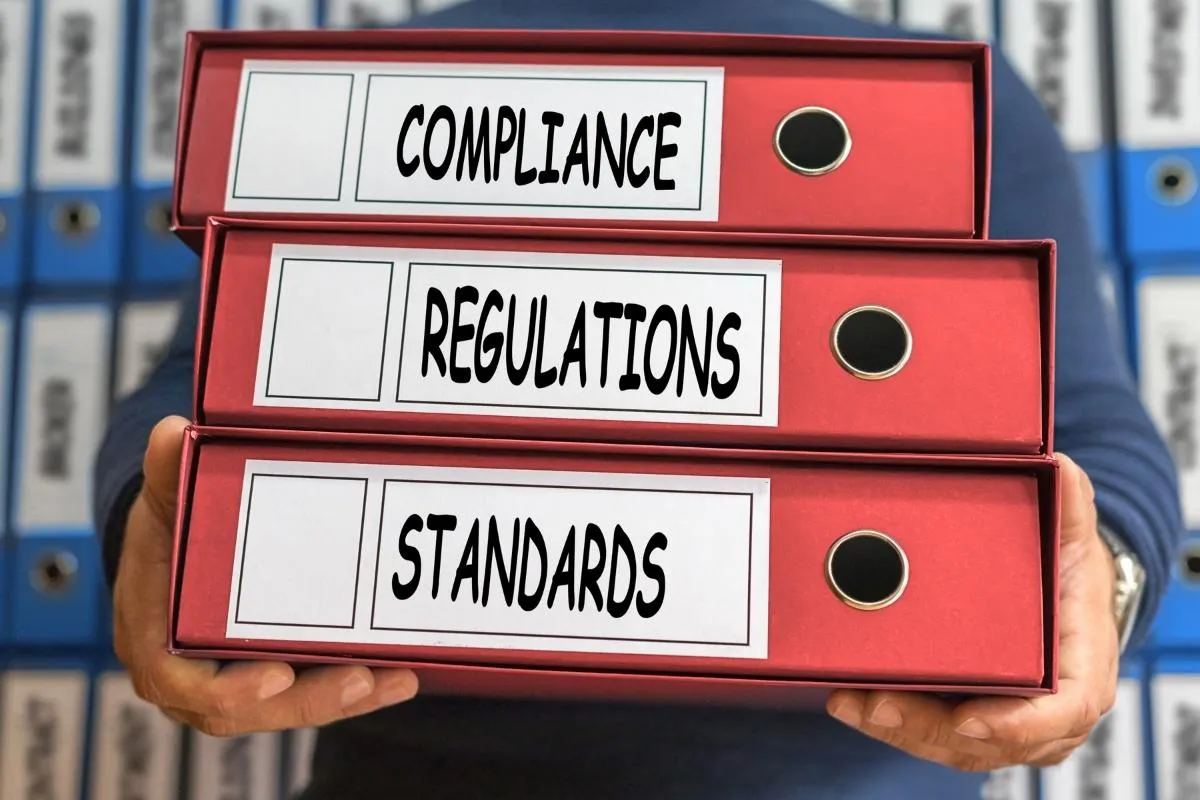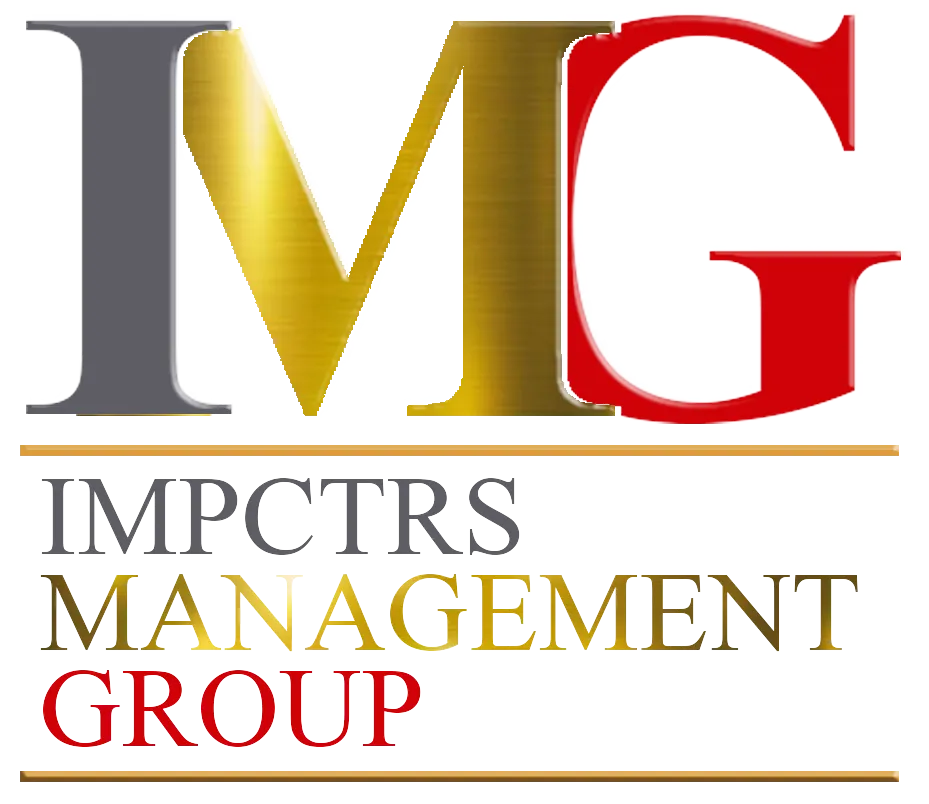See Our Latest Blogs
The Impctrs Management Group blog is where strategy meets action. We deliver powerful insights, practical strategies, and AI-driven solutions designed to help social impact businesses amplify their reach, fund their missions, and scale their operations sustainably. Every article is crafted to equip you with the knowledge and tools to lead with purpose and grow with confidence.

The Corporate Binder: Does Your Nonprofit Really Need One?
“A nonprofit’s mission may win hearts, but its corporate binder wins trust. True impact thrives where passion and preparation meet.” - Tracy V. Allen
Introduction:
Running a nonprofit isn't just about fulfilling your mission—it's also about meticulous record-keeping and regulatory compliance. One indispensable tool that helps manage these responsibilities effectively is the corporate binder. But what exactly is it, why is it crucial, and how do you set one up? Let's break it down comprehensively.

What is a Corporate Binder?
A corporate binder is essentially the backbone of your nonprofit’s administrative documentation. It is a centralized record containing all essential legal, financial, governance, and operational documents required to maintain compliance, support transparency, and facilitate effective management. Think of it as your nonprofit's institutional memory—a place where history, accountability, and legitimacy live.
Whether you're preparing for an annual board meeting, applying for a government grant, or undergoing an audit, your corporate binder ensures you have everything at your fingertips.
Why Does Your Nonprofit Need One?
A corporate binder serves several critical purposes:
Compliance: Nonprofits are subject to local, state, and federal regulations. A complete and well-maintained binder can demonstrate legal compliance during audits or reviews.
Transparency: Grantmakers, board members, and donors often want to see how your organization governs itself. Transparent records instill trust and confidence.
Efficiency: Looking for a document during crunch time? A well-organized binder saves time, avoids panic, and supports smooth operations.
Preparedness: It helps ensure your nonprofit is always ready to provide the necessary documentation when applying for funding, hosting a board review, or facing a surprise audit.
Continuity: Should there be a change in leadership or staff, a detailed binder can ensure a seamless transition by preserving institutional knowledge.
Physical or Digital—Or Both?
Corporate binders can be created physically (e.g., using a three-ring binder) or digitally stored on a secure cloud-based system or local server. I highly recommend maintaining both formats. A physical binder is helpful for in-person meetings or site visits, while digital files offer convenience, remote access, and security through regular backups.
Organizing Your Nonprofit’s Corporate Binder
Because of the volume of documentation involved, most nonprofits use multiple binders or folders organized by category. Here’s a detailed breakdown of the primary categories you should maintain:
Binder 1 – Structure
These documents establish and govern your nonprofit:
Articles of Incorporation
Bylaws
IRS Determination Letter
Employer Identification Number (EIN) Documents
Permits and State Registrations
Board Member List and Resumes
Nonprofit Board Liability Insurance
State Annual/Bi-annual Reports
Conflict of Interest Statements
Operating or Shareholder Agreements
Initial and Amended Bank Account Documents
Amended Articles or Bylaws (if applicable)
Binder 2 – Minutes
Meeting documentation is a critical part of governance:
Meeting minutes from all board and committee meetings
Notices of meetings sent to board members
Board resolutions and voting records
Attendance records for board meetings
Binder 3 – Accounting
Keep detailed financial documentation to ensure compliance and transparency:
Bank and Credit Card Statements
Employee-issued credit card records
Employee expense account documentation
Contracts approved by the board or executive team
Independent Audit Reports
Major Contracts and Related Accounting Records
IRS Forms 990, 990-N, or 990-EZ (past 3 years minimum)
Loan Documentation and Repayment Schedules
Grant Proposals, Award Letters, and Reporting Documents
Fundraising Campaign Reports and Donation Receipts
Binder 4 – Human Resources
Personnel management documentation should be centralized and confidential:
Job Descriptions for all staff and leadership roles
Employment and Contractor Agreements
Compensation Records and Justification
Benefits Documentation:
Health, Dental, Vision Insurance
Disability and Life Insurance
Retirement Plans (401k, Pension)
Signed Conflict of Interest Declarations
Sexual Harassment and Anti-Discrimination Policies
Employee Evaluations and Disciplinary Actions (as applicable)
Binder 5 – Policies and Procedures
These documents help standardize how your nonprofit operates:
Employee Handbook (signed copies recommended)
Volunteer Handbook and Orientation Materials
Onboarding Procedures for Staff, Contractors, and Clients
Confidentiality Agreements and NDAs
Whistleblower Policy
Data Privacy and IT Usage Policy
Binder 6 – Property
Track the assets and spaces your organization owns or leases:
Lease Agreements, Property Deeds
Mortgage Documentation or Rental Receipts
Insurance Policies for Property, Vehicles, and Equipment
Maintenance Contracts or Service Agreements
Binder 7 – Miscellaneous
Use this binder for important but uncategorized items:
Strategic Plans or SWOT Analyses
Memoranda of Understanding (MOUs)
Partnership Agreements
Power of Attorney or Legal Representation Agreements
Media Releases or Crisis Communication Plans
Tips for Maintaining Your Binder
To make your corporate binder an effective tool:
Chronological Order: Place documents in reverse chronological order, with the newest documents on top.
Index Tabs & Table of Contents: Use labeled tabs and a master TOC to make navigation quick and easy.
Quarterly Review Schedule: Designate someone (e.g., board secretary or operations manager) to update the binder quarterly.
Version Control: Clearly label amended documents and archive outdated versions in a separate folder.
Digital Backups: Store copies in secure cloud services like Google Workspace, Dropbox, or OneDrive.
Security: Protect digital files with encryption and restrict physical binder access to authorized personnel only.
The Value of Meticulous Organization
A well-maintained corporate binder is more than a good habit—it’s a reflection of your nonprofit’s credibility and preparedness. It can:
Improve your chances of securing grants
Streamline transitions during leadership changes
Provide clarity during crises
Reduce time and stress during audits
Wrapping It All Up
Your corporate binder is more than just paperwork; it’s a vital tool for organizational effectiveness and compliance. Taking the time to set up and regularly update your corporate binder positions your nonprofit for continued success, transparency, and readiness to handle future challenges.
With these detailed guidelines, your nonprofit is well-equipped to keep administrative processes streamlined, secure, and compliant. Your mission deserves nothing less than organizational excellence, and your corporate binder is a significant step toward achieving it.


Transform your membership into your competitive advantage!
The IMPCTRS Hub is your all-in-one platform for sustainable growth and impact scaling. As a member, you gain access to:
GROWTH RESOURCES
Revenue Generation Tools: Templates, guides, and frameworks
Compliance Library: Stay updated with latest regulations
Impact Measurement Systems: Track and report your success
Operational Toolkits: Streamline your organization
COMMUNITY POWER
Peer Learning: Connect with successful impact leaders
Expert Network: Access specialists and advisors
Collaboration Opportunities: Find partners and supporters
Funding Connections: Meet impact investors and donors
VISIBILITY & RECOGNITION
Media Features: Showcase your impact
Speaking Opportunities: Share your expertise
Success Stories: Highlight your achievements
Partnership Possibilities: Expand your reach
SUCCESS STORIES
LISA, a small business owner who hit her first big revenue goal last year. While she was thrilled with the immediate results, her business hit a plateau shortly after. After working with us, Lisa realized that while she was celebrating profits, she wasn’t reinvesting them wisely. She developed a reinvestment plan that focused on upgrading her marketing strategy and improving customer retention systems. Within a few months, her business not only broke through the plateau but began generating consistent, long-term profits.
MIKE, a digital marketing consultant who was spending hours each week managing his social media and handling client billing. He knew these tasks weren’t his strengths, but he thought doing them himself would save money. After burning out, Mike decided to outsource both areas. The result? His business became more streamlined, he regained hours each week to focus on client strategy, and his overall revenue increased by 20% within six months. The key wasn’t working harder—it was outsourcing smarter.
SARAH, one of our clients. She started out with a brilliant idea for an online course but struggled to launch it because she didn’t feel “expert enough.” After working with us, she faced her impostor syndrome head-on. We helped her focus on her strengths, refine her course, and launch with confidence. Within six months, she not only filled her course but also started attracting speaking engagements—all because she chose to move forward despite her doubts.
WHY CHOOSE
Proven Expertise:
• Successfully guided 100+ organizations
Compliance Focus:
• Keep your status while growing revenue
Comprehensive Support:
• Strategy through implementation
Community Power:
• Access to vast impact network
IMG: Where Purpose Meets Prosperity
JOIN OUR MAILING LIST

Contact Us

Ready to transform your impact into sustainable revenue?
GET STARTED TODAY!
General Inquiry: [email protected]
Strategic Inquiries: [email protected]
IMPCTRS Hub: [email protected]
Speaking & Training: [email protected]
BUSINESS HOURS:
Monday -Thursday
9:00 AM- 5:00 PM EST
Phone: 888-429-5094
Address: 830 N John Young Parkway
Kissimmee, FL 34741
